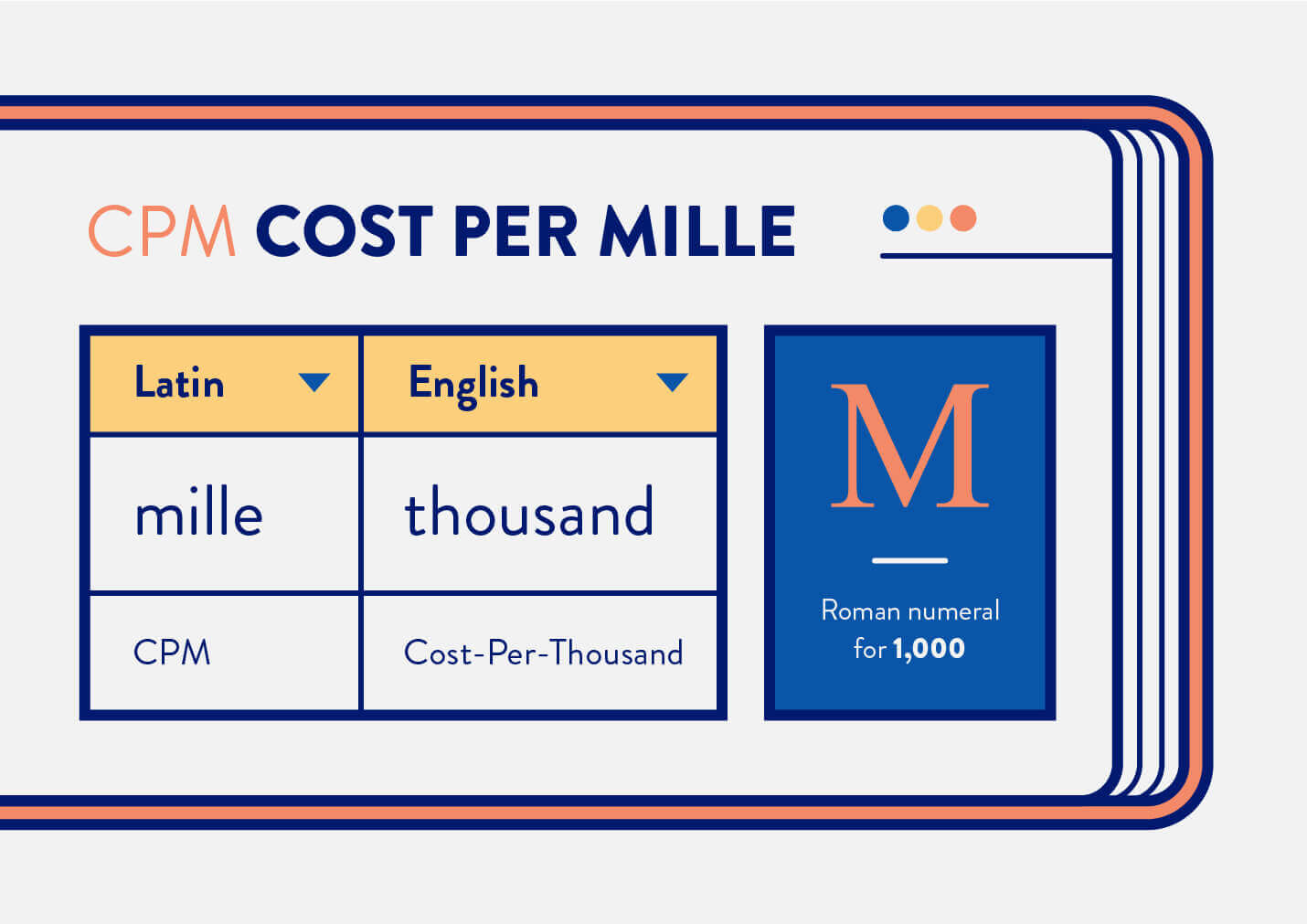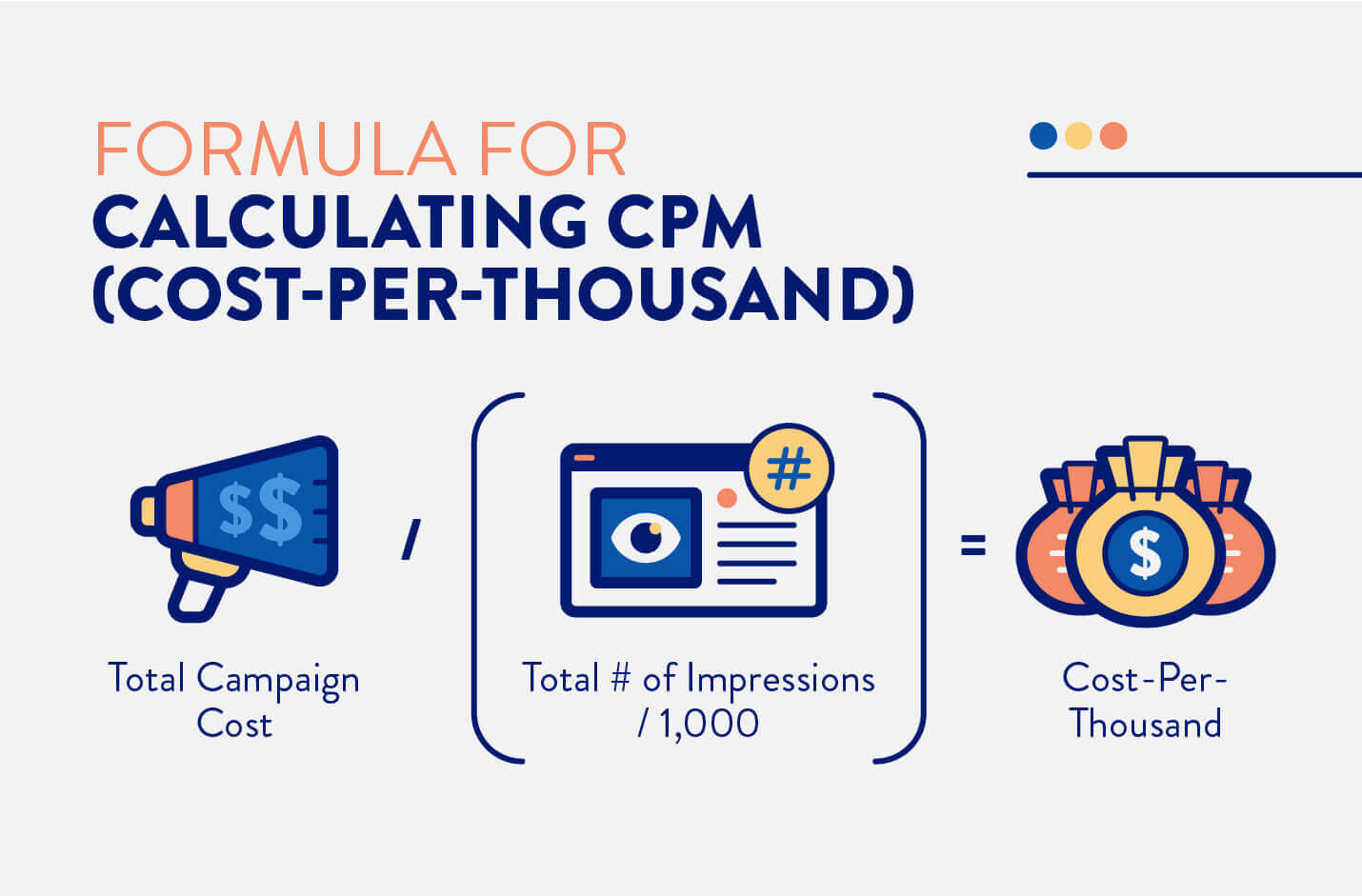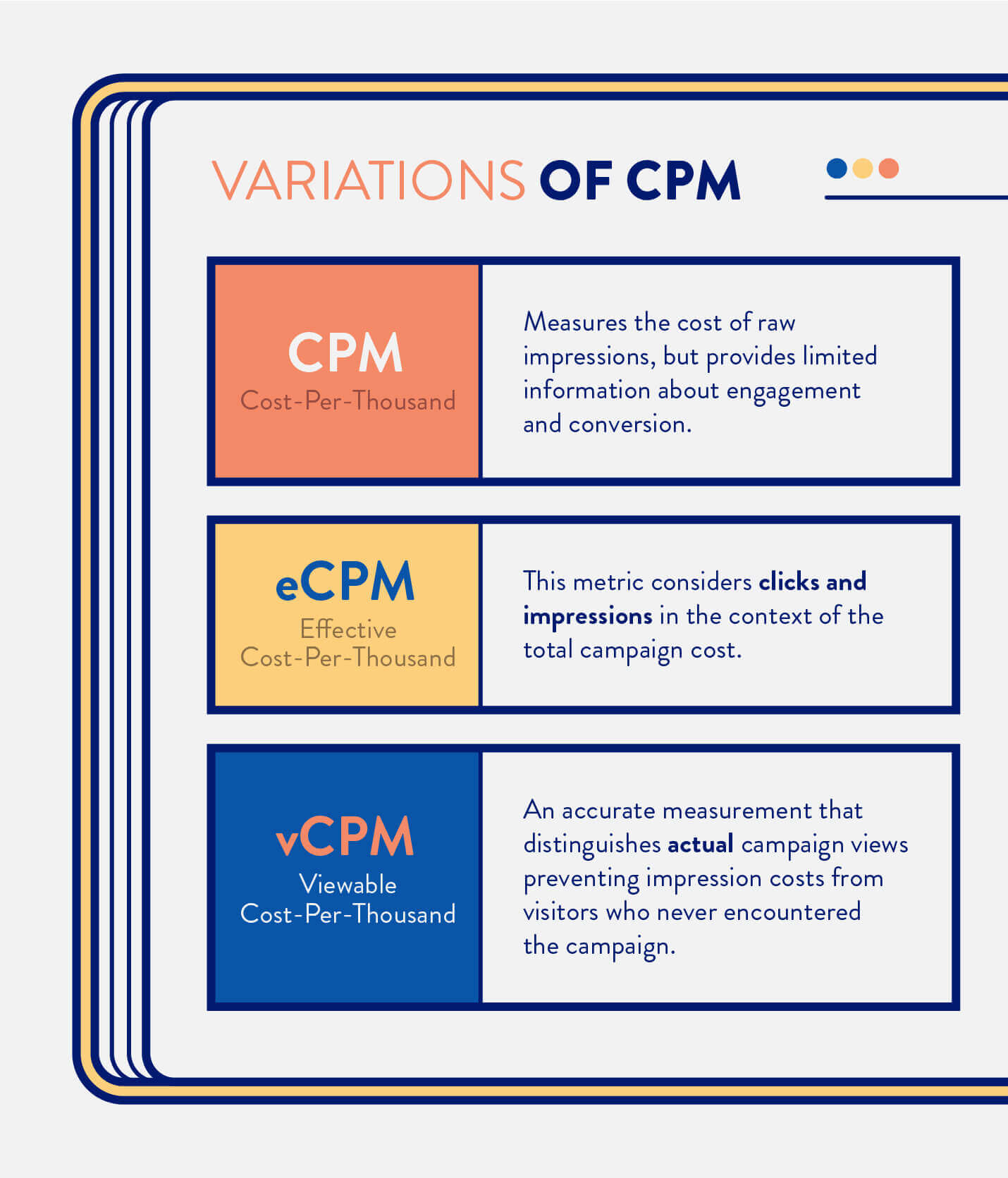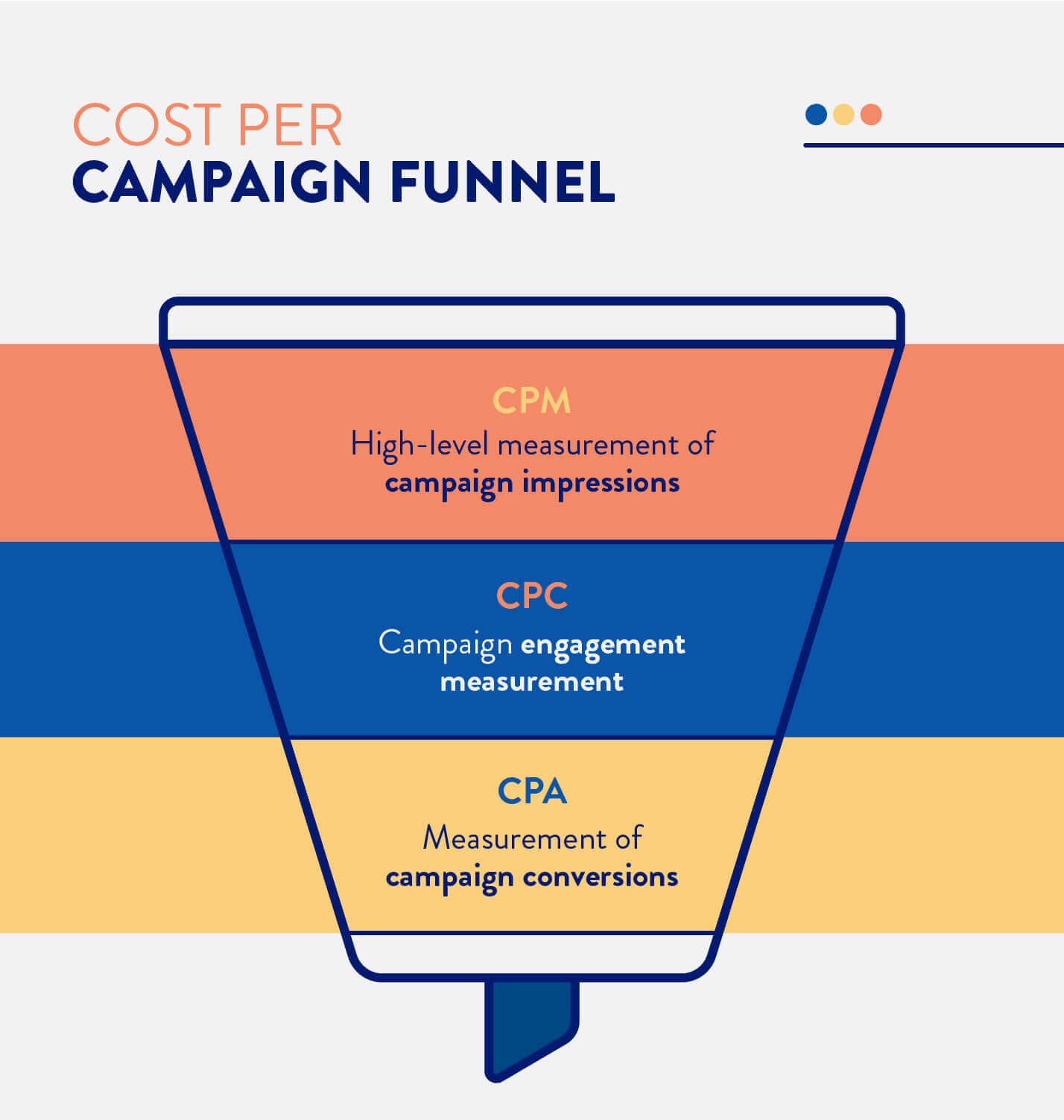Acronyms spring eternal.
Did you know that “scuba” and “laser” are both acronyms? They stand for “self-contained underwater breathing apparatus” and “light amplification by stimulated emission of radiation,” respectively.
In rare cases, however, the acronym and the definition don’t quite sync up.
CPM, for example, is cost-per-thousand, so what does CPM actually mean? Why is there an “M” If CPM stands for cost-per-thousand?
What CPM Means?
In online advertising and digital marketing, CPM is the cost-per-thousand-impressions or simply the price a marketer would pay to receive 1,000 campaign impressions.
CPM actually stands for “cost per mille” — not like a rental car’s cost per mile, but cost per mille with two Ls — which means “thousand” in Latin. The Roman numeral for 1,000 is also “M.”
So what exactly does this CPM do for us as marketers? 
CPM is a way to measure marketing expenses for large numbers of impressions. It’s like shorthand, since expressing individual costs per impression would become tedious and, in many cases, represent fractions of a penny.
As mobile marketers, we must understand our campaign costs closely and have the growth to justify the CPM. Most marketers would agree an important metric to track is your CAC:LTV ratio, but another important consideration is the percentage your CPM comprises your CAC.
If your cost per thousand impressions is a large portion of your customer acquisition cost on a given marketing channel or platform, you should weigh your marketing alternatives.
How to Calculate CPM
The formula to calculate cost-per-thousand impressions is as follows:
CPM = Total Campaign Cost / (Total # of Impressions / 1,000)

Let’s clarify this formula by working through an example. If a banner display ad campaign costs $50,000 and garners 10 million impressions, the CPM would be $5.
Marketers must understand the importance of impressions and especially the number of impressions required to convert prospects into customers based on their industry, business, or product.
A CPM is worthless unless you understand the conversion rate of those impressions.
Variations of CPM: eCPM and vCPM
A picture CPM is worth a thousand words impressions.
But CPM can be a misrepresentation of what marketers are actually trying to measure: attention. Multimedia marketing such as display ads, YouTube ads, podcast ads, and others charge on a CPM basis.
If a user lands on a webpage and stays for 30 seconds without scrolling far enough down the page to see the ad placement, does that count as an impression? If a podcast listener skips over the section containing your ad spot, does that count as an impression?
Unfortunately, in many cases, these scenarios are considered impressions and will be included in your CPM. This is why terms like eCPM and vCPM now exist.
eCPM is the effective cost-per-thousand. This measurement considers the actual number of clicks, number of impressions, and the total cost of the campaign. The calculation for eCPM is:
eCPM = (CPC * # of Clicks) / (Impressions / 1,000)
For example, let’s assume a campaign had 10,000 clicks at a cost per click of $2. If the campaign resulted in 14 million impressions, the eCPM would be calculated as:
eCPM = ($2 * 10,000) / (14,000,000 / 1,000)
= 20,000 / 14,000
= $1.42
vCPM is the cost-per-thousand viewable impressions. This term has emerged as a solution to the issue outlined above — your campaign may be present in the web page or app, but was it actually viewed?
Google’s Display Network is one of the advocates for vCPM as the optimal bidding strategy for companies that want to increase the awareness of their brand versus simply generating traffic.1 
CPM vs. CPC vs. CPA
When measuring the success of a marketing campaign, you must understand the goals of the campaign from the outset. These goals can help clarify which metrics will be your leading indicators of success or failure.
We’ve discussed the concern with CPM and measuring actual views, but what we have not accounted for is the right views. Even if your campaign receives a thousand views, what percentage of those views is actually from prospective customers?
If the total addressable market for your product or service is broad, then perhaps CPM is a worthy metric for your business. If, however, your business serves a niche market, the likelihood of CPM being an effective measure of a marketing campaign’s success is slim at best.
CPM is about impressions. If the goal of your marketing campaign is to increase your brand’s visibility and recognition, then thousands of impressions will be ideal.
If traffic generation and conversions are the KPIs your business is after, then you should be more interested in clicks.
CPC, or cost per click, is an effective way for marketers to measure the campaign’s ability to spark interest in the value proposition.
Of course, eCPM is a way to measure both the cost-per-thousand impressions and the cost per click together.
Another metric for more experienced growth marketers is the CPA, or cost-per-acquisition.
CPA measures the results of a campaign’s ability to convert a desired call-to-action. If your campaign is aiming to drive sign-ups, demos, downloads, requests for quotes, or any number of actionable items, the CPA is the metric that matters.
These metrics can be measured separately or compared to determine where breakdowns occur in the customer acquisition process. The cost per campaign funnel could trickle down from CPM > CPC > CPA. 
Considerations Per Marketer
As you can see, CPM is a metric that must be taken into consideration when measuring the performance of your marketing campaign. CPM can easily fall into the dangerous territory of vanity metrics.
To prevent this, make sure your campaign goals fall along the SMART framework. This means your goals must be specific, measurable, and relevant. If your CPM is low but your conversion rate is zero, that low cost per impression can actually become a negative signal.
Once you have a well-performing user acquisition campaign, your focus on CPM, CPC, and CPA will need to transition to marketing funnels, user journeys, and RFM analysis among others.
CleverTap provides the tools and resources to manage your customer engagement and retention strategies. Sign up for a free demo of the most intelligent mobile marketing platform.

See how today’s top brands use CleverTap to drive long-term growth and retention
Subharun Mukherjee 
Heads Cross-Functional Marketing.Expert in SaaS Product Marketing, CX & GTM strategies.
Free Customer Engagement Guides
Join our newsletter for actionable tips and proven strategies to grow your business and engage your customers.















































